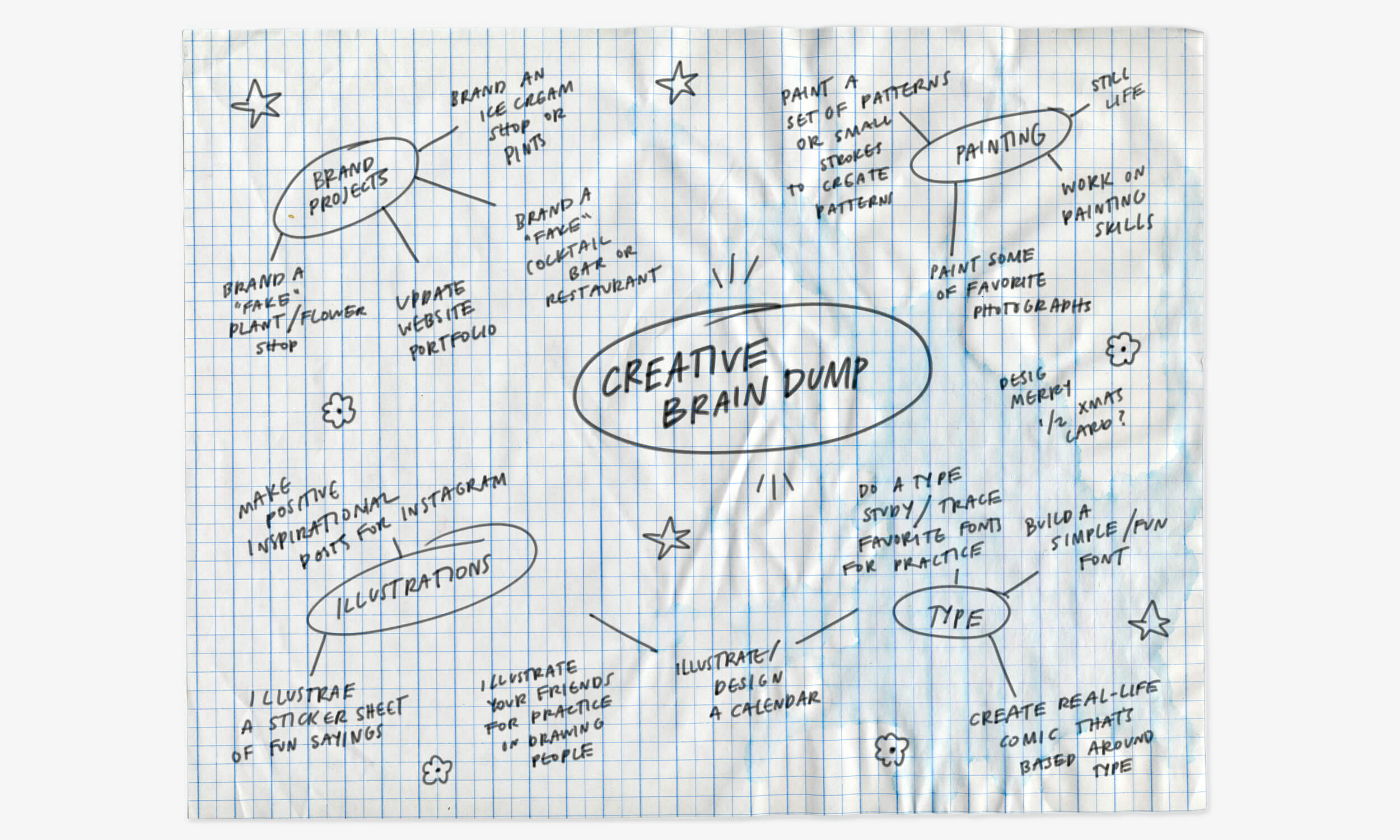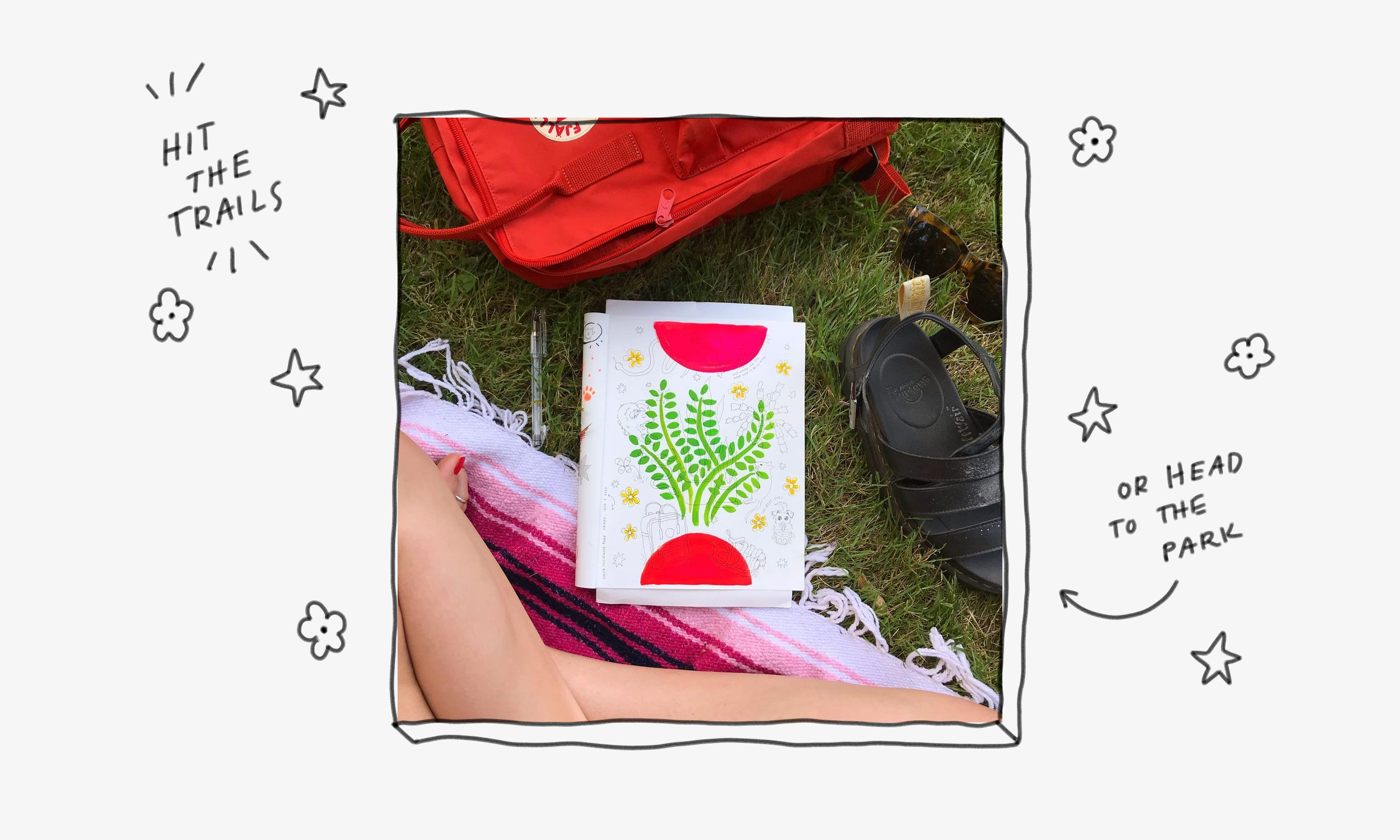Creativity comes in waves, much like positivity, happiness and health (as most of us learned in 2020). It can be hard to stay motivated with creative tasks when your scenery looks a lot like your feet propped up in front of your TV screen. Are you ready to step back into the creative light, but you’re struggling with where to start? We’ve got you covered with our brand new program called “Couch to Creative: a 6-step program to get your pencil back to the paper.” (Disclaimer— it’s not really a “program” it’s literally just 6 ideas to get your creative juices flowing, keep reading to learn more.)
Step 1: Creative Brain Dump
What IS a creative brain dump? Well, it’s quite possibly one of the best activities to do when you have no idea WHAT you want to do. Set a timer for 15-30 minutes, grab a pen and a piece of paper and start brainstorming. Think about projects that you’ve always wanted to create. Think about things you’ve seen other creative friends do, how could you do that in your own way? You can even browse Pinterest or Instagram to find project inspiration. What projects would you like to add to your portfolio? Write down every idea that comes to mind, and maybe you can start connecting the dots between ideas. Maybe you’ll see a pattern of things you want to create. It can be really inspiring to visualize your creative goals, and this is a great place to start. Have you filled your page? Great, now pick your favorite idea and go for it!

Step 2: Coffee Table Still Life
Still having trouble finding a place to start? Use the objects around you for inspiration. Still life photos, illustrations, paintings, sketches, etc. are all beautiful ways in which we record our daily lives. Still life paintings created back in the 16th and 17th century provide a window into what normal life was like back then. You can do the same. When we create art, we are creating history, which is extremely powerful especially in the age of internet. Leave your coffee table, kitchen table, desk, whatever it may be EXACTLY the way it is right now. DON’T tidy. Now paint it, illustrate it, do some sketches of it, take some photographs. Your home is (or should be) a reflection of yourself, so get inspired by it.
If this isn’t desirable for you, maybe you’re staying with family or maybe you’ve just moved into a new home and you have no furniture, gather some of your favorite objects and set up a still life. This is a great exercise to help you get inspired by your own self and could even help you hone in on a creative style.
Step 3: Bookshelf Alphabet
Another at-home creative activity is what I like to call making a “bookshelf alphabet”. The task is to draw/illustrate 1 letter from each book cover on your shelf. You can try to recreate it perfectly or you can make it abstract. Work your way through this exercise until something inspires you. If you’re particularly drawn to one of the letters that you drew, keep going in that style, write your favorite quote in those letters. Maybe you went the abstract route and one of the letters looks like a piece of coral? Draw the whole reef.
Step 4: Take a Hike
You know we had to throw it in here somewhere. What’s the first thing someone tells you to do if you’re feeling a creative block? Go for a walk. TYPICAL, but hey if it works, it works. Try to get out the house at least once a day, even if that just means walking around the block. It may not feel like it’s helping, but trust me, it almost always does. The other day I decided to turn down a street I don’t normally walk down, and I found a beautiful park with benches and huge grassy areas. I ended up going back that very weekend with a blanket, a sketch book and a book, and it was a lovely afternoon. Always practice safe walking habits though. Don’t put yourself in a dangerous position for the sake of creativity.

Step 5: Timed Drawing
Try setting a timer for 30 minutes and sketch something like your house or your plants or yourself. Setting a time limit for a project can save us from getting distracted and caught up in the details. A timer can be your best friend if you let it.
Step 6: Learn Something New!
Is there a hobby you’ve always wanted to get into or a skill you’ve always wanted to learn? Do some research and then set time aside each day to devote to this new skill or hobby. Whether it’s obvious or not, learning new things helps inspire our creative work. Combining the hobbies you love with the skills you’ve acquired helps artists develop more unique work, while still being able to relate to people. If you’re stuck deciding on what you want to learn, Skillshare and Youtube are both great resources for providing learning new things. Hop onto one of those sites and start digging until you come across something that sparks interest.
If you’re ever feeling anxious about your lack of creating, take some deep breaths, maybe do some meditating, and let yourself know that you ARE a creative and talented person and that this block won’t last forever. Hopefully these ideas are fresh and helpful to your creative self, now let’s get out there and make cool things!

